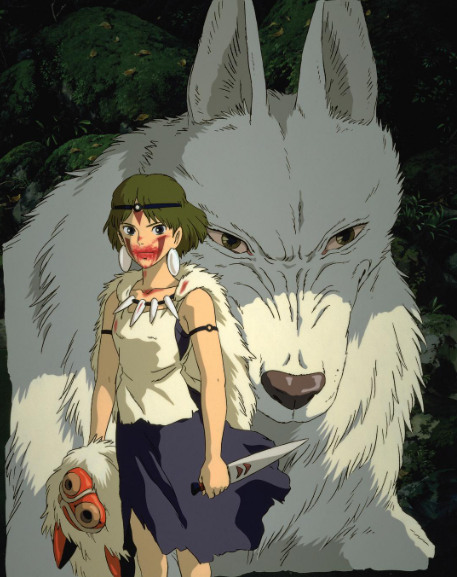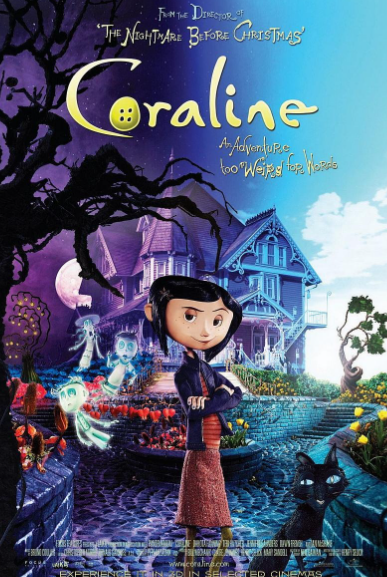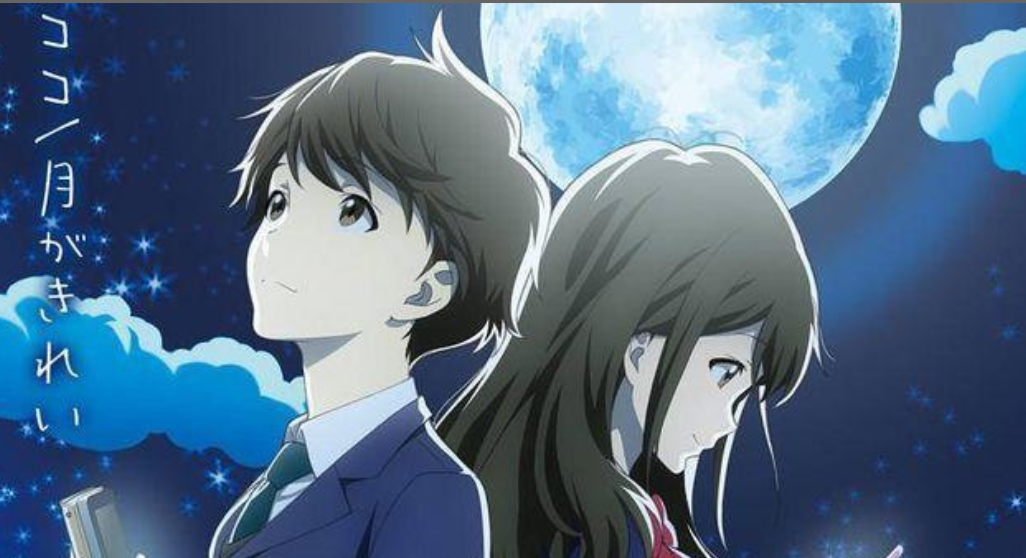
Princess Mononoke
If you feel confused, upset or even depressed, you will always feel lucky after watching Princess Mononoke. Although it is not a new movie either, I have watched it twice recently because I feel depressed. I feel alive again, so I want to say something. If you have to say one thing, it’s this: this is Hayat Miyazaki’s most in-depth work to date. Big bang, big bang, totally worthy of so much box office
The depth is in the theme. It is said that the eternal themes of Japanese cinema are love and violence – perhaps true, but too much discussion is too mundane. What makes Miyazaki unique is that the love and violence in his stories are actually Settings for deeper ideas. Violence is something he has always opposed. As can be seen in The Valley of the Wind, the greater the power, the greater the pain, both to oneself and to the enemy. Miyazaki’s thoughts are often so profound that they may be beyond the comprehension of children, and most of his audiences are teenagers and older. There are two main contradictions in his thoughts: man and nature, life and death.
In an earlier work, the film City in the Sky, the former contradiction already exists. In the story, long ago the inhabitants of Laputa, a city in the sky, were doomed because they were floating in the air, unable to touch the vast earth, a bit like the saying that “out of touch” leads to disaster. The army, which tried to destroy Laputa, was unable to overcome its desire for money and ended up destroying itself. Laputa, which was supposed to be destroyed by a spell spoken by Hide and Jay, was destroyed when a tree took hold of the soil of the island and instead of going up in flames; it flew far into the sky. These three points show that challenging the laws of nature will cause serious consequences. Our fate is controlled by nature, and nature can punish us or forgive us. This was Miyazaki’s early environmental thinking. Similarly, in the Valley of the Wind, the girl Nausea realizes the secret of wind and water to build forests and transform deserts, and stops human beings from killing nature, and finally saves mankind.
But these works are Miyazaki’s early environmentalism, or simply, more generally accepted ideas influenced by the tide of commercial films. Miyazaki’s eventually formed thoughts on man and nature began to doubt the meaning of environmental protection. Needless to say, human greed is endless and cannot be easily satisfied — the most basic desire of human beings is the desire for survival. In order to survive, it is impossible not to ask for materials from nature. In such a large number of people, the desire is bound to be greater; to break the balance of nature, to provoke nature is inevitable. After the disaster is over, people rebuild again, become big again, irritate nature again, and so on, peaceful coexistence may be only a dream. The comic book Valley of the Wind, which ended many years later, completely negated Nausea’s efforts and shattered her dream of peaceful coexistence.
This brings us to the second contradiction: life and death. No matter how much we sympathize with the riddled nature, we are still human beings and we still have to fight for the needs of human existence. Death is a way, but it is a dead end, an end. Human beings as a whole need to survive, as individuals, are also reluctant to give up survival. In the endless contradiction between man and nature, we have to fight for survival. So there was more violence and more love.
However, the impact of “Valley of the Wind” was limited because the story was so large. And there was Princess Mononoke (after a long talk, we finally got to the point).
Princess Mononoke is thorough about both themes, but it doesn’t explain them. Magic Jib occupied the mountain, mining iron ore, just to make a living for the people under her. Prevented by the forest animals, they engaged in a fierce battle. The evil God punishes people with curses, and the Kirin God punishes people with death. Asoka tries to find a way to coexist with nature, but fails, finally can only say to Princess Mononoke Shan: We are still alive. In the end, Miyazaki still has a chance of survival — the Kirin god dies and the earth returns to spring and a new bud begins. Seeing this sad and happy ending, I still could not help thinking: the punishment of nature made human efforts to build into a void, backward decades and hundreds of years, but the destruction of the forest is nature backward thousands of years, human will face a harsh reality for a long time, the punishment is still very severe, and at the same time, nature has suffered more heavy losses. With this window of opportunity, man can still be strong and harm nature in return. All the war and all the violence did not alter this cycle — a cycle which, perhaps, had begun long, long ago, according to the accounts of the ancient Flood of different peoples left behind.
As for the characters, the young Asoka should be said to be the most handsome young image created by Miyazaki Hayat. In terms of personality charm (this word seems to be used a little too much), although the Hal in “Howl’s Moving Castle” is beautiful in appearance and gentle in heart, but after all, the fairy tale color is too strong, which makes it a little distant. Bird with his willingness to lend a hand, a promise, in order to rescue the people at the cost of the body by slowly rotting curse, it can be said that sentient justice, more people feel close. Maiden Shan is taken from the allusion of “Wolf child”, which deeply portrays her demons and the pain that she cannot become a human or a Wolf. Two people who had endured pain, physically and mentally, finally broke the barrier. The climax in which the two of them raise the head of the Unicorn God together and beg for forgiveness is magnificent, but at the end, when the two of them stand on the green hillside and stray Bird says to Shan, “I will come to see you, riding a antelope horse,” it is more peaceful and natural like a pastoral song, rather than the old cliché of a boy returning to his hometown with a maiden.
As for the music, it was very different this time. Instead of using his favorite piano as the main melody, Hashish used an orchestra with a magnificent lineup, and the music was surprisingly powerful. As for the theme song, Mira Michal’s falsetto is very loud and melodious. At the end, when everything comes back to life, Hisaishi’s piano finally appears, smooth and peaceful. Sometimes there is even no background music, which is also very clever: when the pig god turns into a fierce god, there is restless accompaniment music. At this time, the unicorn God appears and suddenly becomes quiet without any sound. As the picture changes, it repeats itself, which is the symbol of the Unicorn God of rest. It seems to be a breakthrough in both music and content.
Miyazaki is said to have planned to stop writing at the end. But it didn’t, and the Cat Returned the Favor and Howl’s Moving Castle were later made. However, these two works are quite strong fairy tales, without the profound ideas of Princess Mononoke. Perhaps he was really tired, harboring himself with this never-ending story for years, or he had no choice but to “live well together” as a matter of interest and not to discuss the issue.
Finally, something else When he made Princess Mononoke, Miyazaki was said to be determined not to compromise with the commercial world — that is, not to let the mundane environmentalism of commercial films be the subject. Sure enough, we realize the depth of his thinking on this issue. However, when the “Princess Mononoke” was introduced by CCTV, it was necessary to change the title to “Princess Magic” — Shan has no magic at all, does he think this title is too terrible? Many of the characters’ names have been changed at the same time, for example, the white Wolf has been changed into a mountain dog, turning the fierce animal into a friend of humans… Sure enough, I was afraid to frighten the child. “Princess Mononoke” is not meant to be a kid-friendly movie, with a lot of bloodletting and the cruelty of survival, not to mention a theme that’s not easy to grasp. CCTV made the most unbearable transformation is the original drama at the end of the dimpling monk saw the earth spring with a smile and sigh of “what a pity, just so little success” into “the power of nature I have seen”. It is a pity that he did not finish the task of killing the Kirin God to get the head of the Kirin God, perhaps he meant to laugh at himself, laughing at the hard work (it can refer to his hard work in order to get the head of the Kirin God, it can also be understood as the hard work of human and nature to struggle and struggle again and again, and I thought it could also be understood as Miyazaki Hayat’s self-mockery). When that turns into an admiration for the power of nature, the film is suddenly reduced to the environmentalism that Mr. Miyazaki himself has railed against for years. The purpose is nothing more than to show children the plot at the same time, and give them the mainstream education of protecting the environment and caring for flowers and trees. Fortunately, it’s good to just watch the story. It was probably the same when it was first released in Japan, but the big box office still went for the story rather than the idea. The purpose of the business was achieved. I wonder if Miyazaki gets lonely. Maybe it’s because of loneliness?


